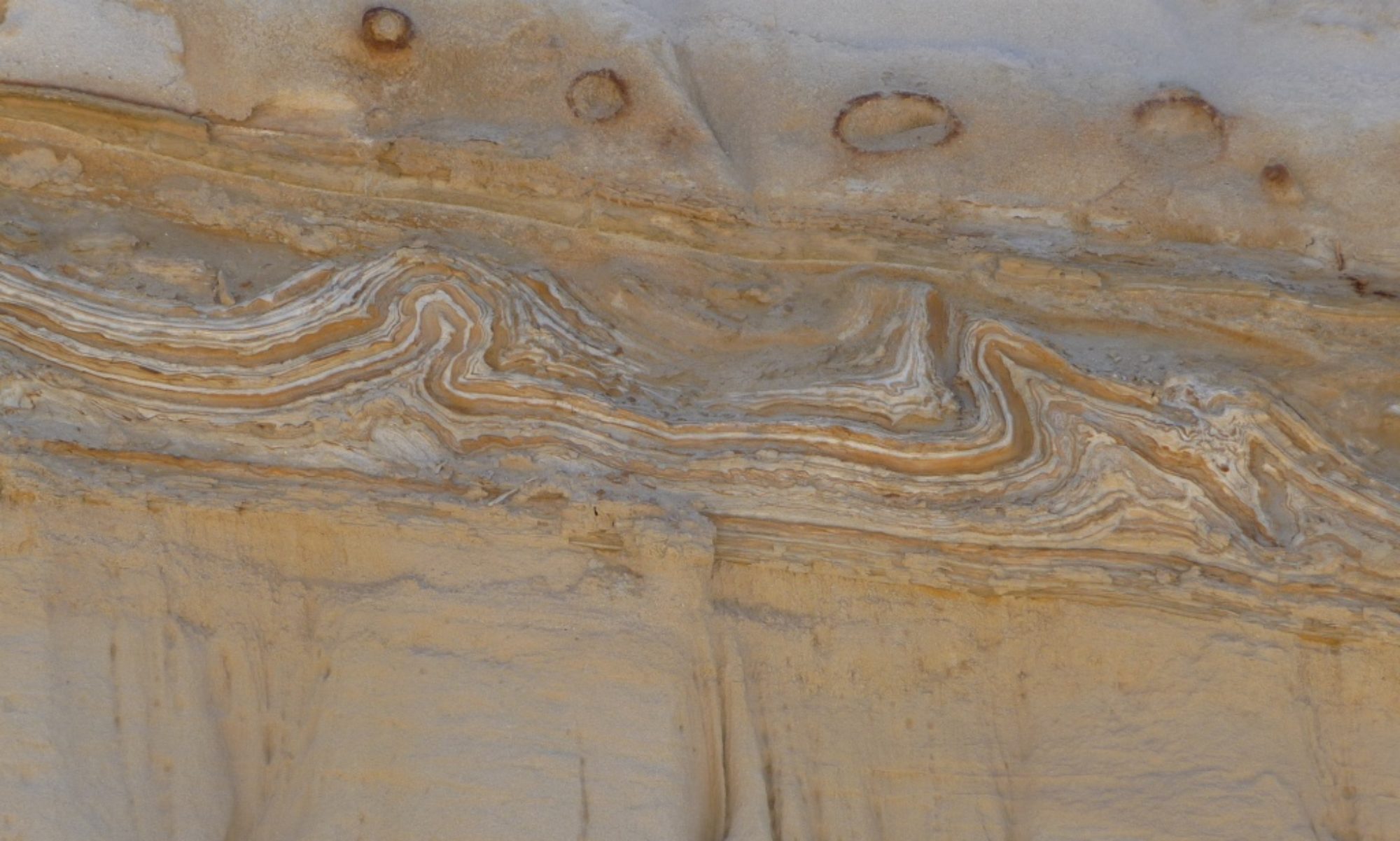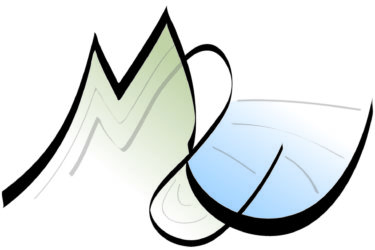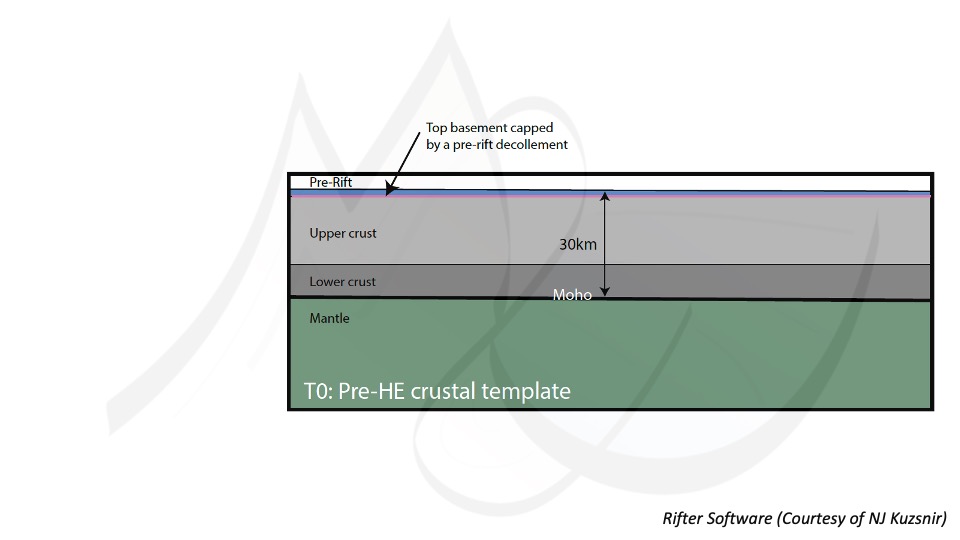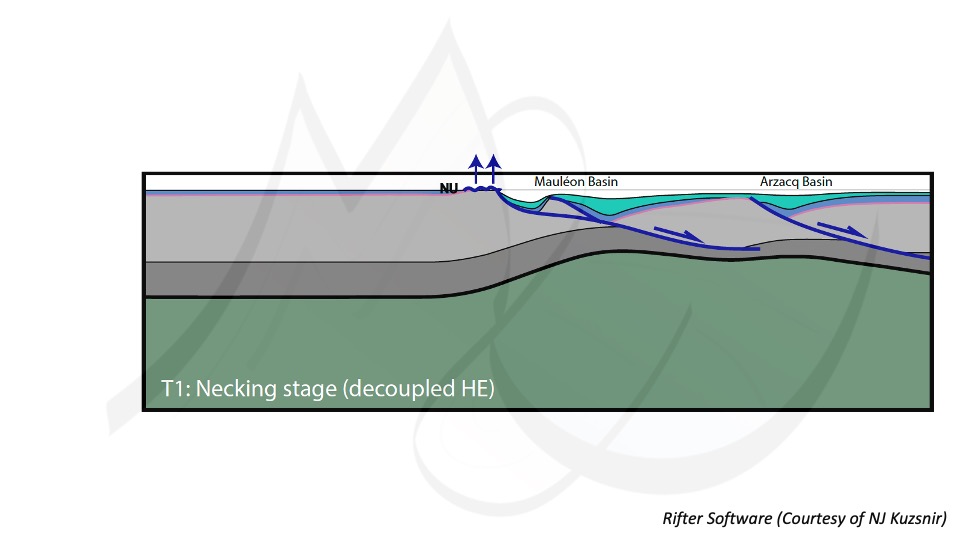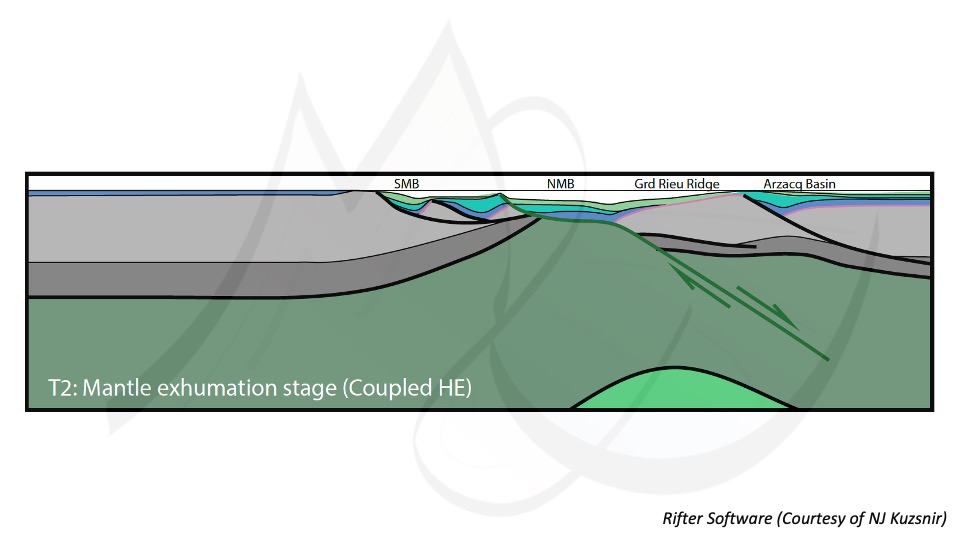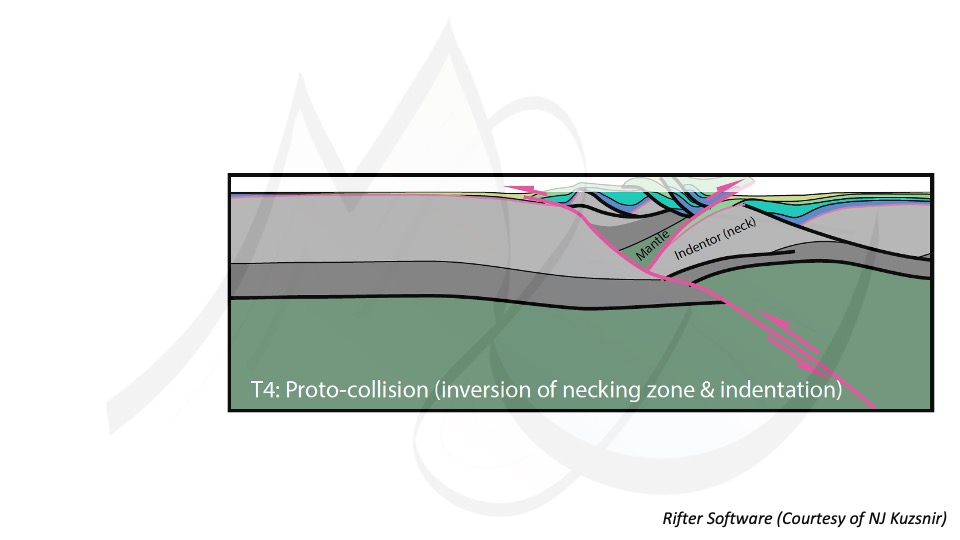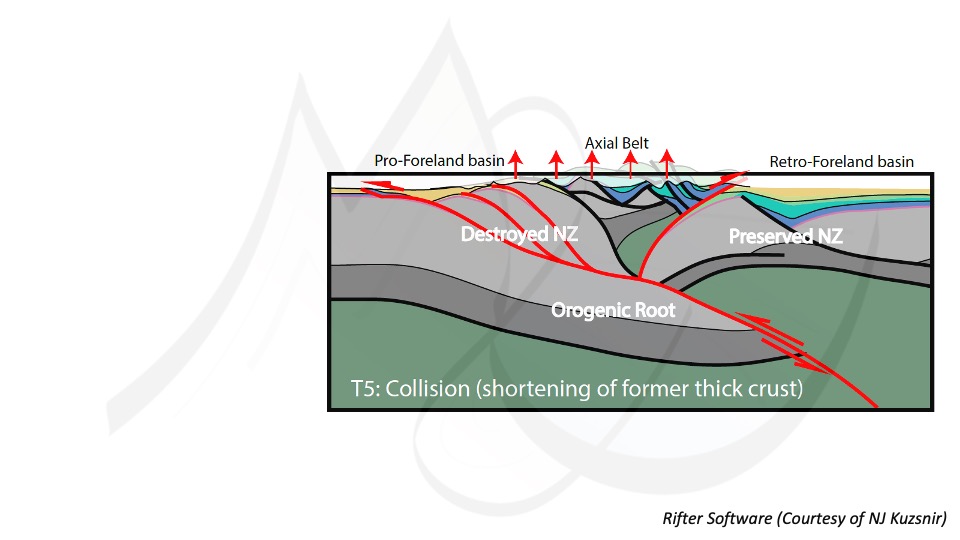In her Tectonophysics paper of 2019, J. Gómez-Romeu used the “Rifter” software developed by N. J. Kuzsnir (University of Liverpool) that we use in M&U SAS to reproduce both the rifting and orogenic evolution of the W-Pyrenees (France). She used both surface and subsurface calibrations from the Western Pyrenees as well as the geophysical images in order to reproduce first order characteristics of the rifting and orogenic record at basin and crustal scales. This numerical experiment also allowed to integrate the key role of the pre-rift salt during both extensional and compressional deformations.
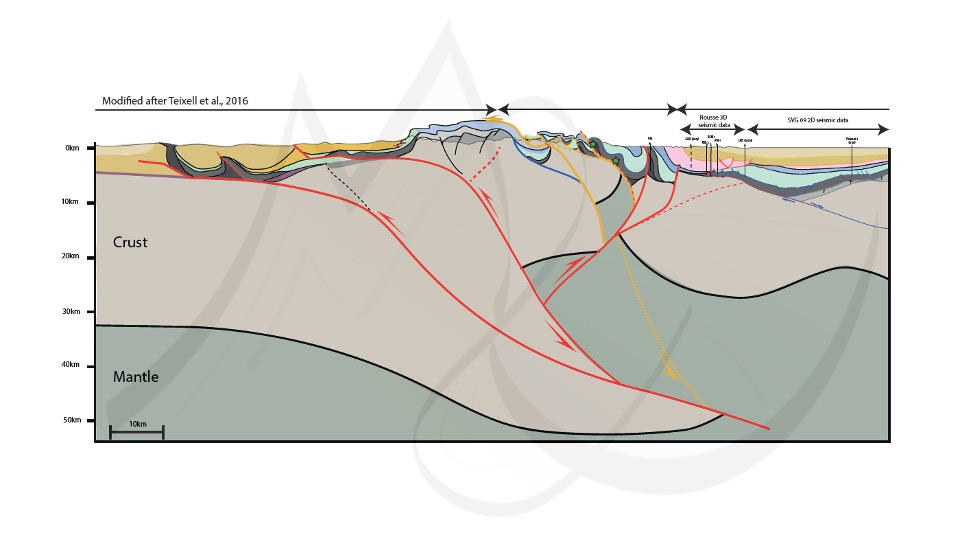
This study is basically showing that the key orogenic stages recorded within the Western Pyrenees result form the sequential inversion of key rift related domains from distal to proximal…
The first orogenic phase (between stages 5 & 6 in Fig. 1), namely the “early orogenesis”, consists in the underthrusting (“pseudo-subduction”) of the former exhumed mantle and hyper-thinned crustal domains underneath its conjugate margin. These rift domains, located in the most distal areas of the the Pyrenean hyper-extended rift, are formed during the final hyper-extension rifting phase (between stages 3 & 4 of Fig. 1). As the underthrusting fault plane reused the top-basement (a weak surface made of serpentinites, clay-rich altered basement and even pre-rift salt), it results in forming the early orogenic accretionary prism made of distal margin post-salt sediments made of pre-, syn- and post-rift units with some sliced basement blocks (shortcut of basement topographies). Underneath, basement rocks formed by mantle and thinned crust form the so-called “Iberian Slab” imaged by Geophysical data (Wang et al., 2016, Chevrot et al., 2018).
Fig. 2: Animated section of the Western Pyrenees redrawn from Gómez-Romeu et al. (2018). These sections reconstructed from the present-day geological target data (Fig. 1 + geophysical images). This animation makes the first order evolution of the W-Pyrenees dealing with the Cretaceous Hyper-extension rifting (HE) with a mantle-decoupled (necking) and a mantle-coupled hyper-extension rifting stage. At Upper Santonian, early orogenesis starts with the inversion/closure of the former hyper-extended rift domains. Then, at the Meso-Cenozoic transition, the proto-collision corresponds to the inversion and indentation of the lower plate (Iberian) Necking zone leading to change the geometry of the convergent plate boundary and a mantle sampling. Finally, the proto-collision leads to the crustal nappe-stacking along the lower plate consisting in the shortening of the former thick Iberian crust. These illustrations are protected by IP policies. Cite as: Gómez-Romeu, J.; Ducoux, M. and Masini, E. (2021; July). Sci-Lights 20-01. M&U SAS Website. http://mandu-geology.fr/?page_id=1099
The second orogenic phase (between stage 6 & 7 in Fig. 1), namely the “Proto-collision”, consists in the inversion of the former rift necking zone formed during the necking phase of rifting (between stages 2 & 3 in Fig. 1) located in the lower plate side of the converging plates. As this domain corresponds to a pre-orogenic crutal taper, the thickness of the crust involved within the convergence plate boundary is increasing rapidly through time causing a mechanical crisis in the orogenic dynamic (rapid increase of the buoyancy of underthrusted material). Additionally, the top-basement decollement level active during the “early orogenic phase” cannot be used anymore. A shortcut linking the former “underthrust fault plane” and the mid-crustal décollement located behind the necking zone forms in order to accommodate the continuing convergence. Geometrically, this shortcut is stepping below the former underthrust fault plate leading to form a tectonic popup (an orogenic lid) made of the early orogenic wedge, deformed thinned crust & mantle rocks while the lower plate gets indented by the conjugate necking zone. This phase leads to rupture the thick continental crust what requires a major tectonic stress increase to sustain the convergence. Such a mechanical issue is further enhanced by the increasing buoyancy of the “slab”. This complex transitional phase therefore results in switching the orogenesis from a “thin-skinned” dominated convergence (decoupling between basement and cover) to a “thick-skinned” dominated shortening that dominated the subsequent “Collision Phase”.
The last and more “classical” orogenic phase (between stages 7 & 8 in Fig. 1), namely the “mature collisional orogenesis”, consists in the shortening of the former proximal rift domains formed during early rifting. Thick-skinned shortening is then accommodated by the in-sequence crustal nappe-stacking using an intra-crustal décollement (e.g. the Conrad brittle-ductile transition). As the thickness and buoyancy of underthrusted / accreted material is maximum, this stage is main contributor to the crustal thickening (formation of the orogenic root) and leads to form the high orogenic reliefs by isostasy. The orogenic load combined with the in-sequence thrusting at the surface controls the classical dynamic of foreland basins at that time.
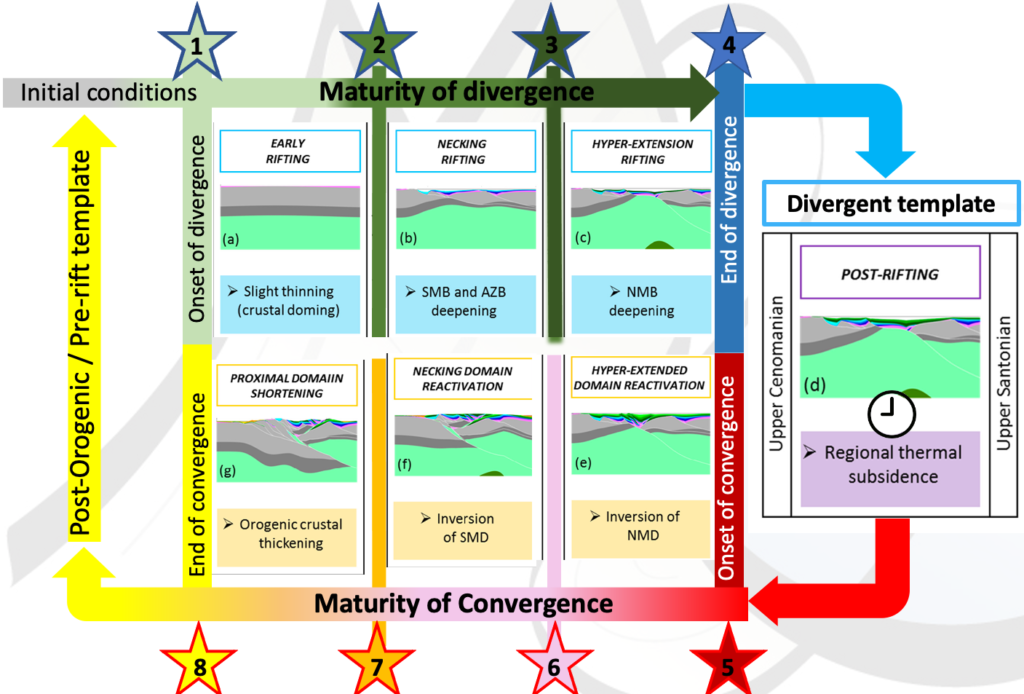
From these descriptions, we therefore conclude that the maturity phases of the Pyrenean orogenesis is first controlled by the pre-orogenic rift crustal and lithospheric template consisting in this case of a failed magma-poor hyper-extended rift system bearing a pre-kinematic salt layer. From the present-day understanding of the great morpho-structural and compositional variability of passive margins worldwide (either rift or transform margins), one of the main challenging but exciting scientific issue we address today at M&U is to explore how much the orogenic variability is predestined by the divergence variability. This is the roots of the M&U’s “Oro-Genetic” research program…
Interested in learning more? Lost into the geological complexity of our Research? Please contact us and read Julia’s paper !
